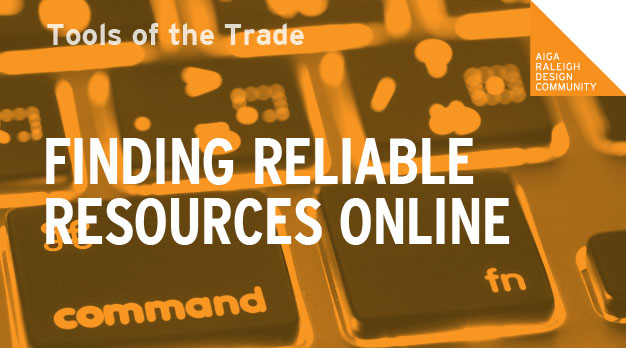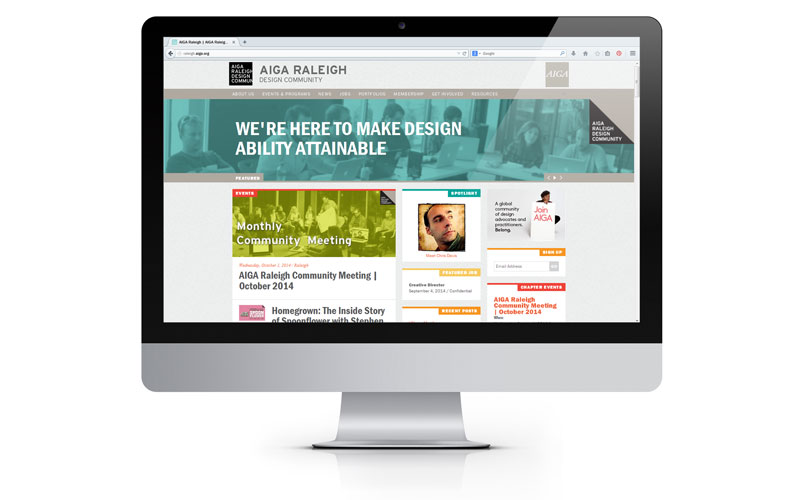 As a designer I am sure you spend many hours of your day, and probably nights, in front of your computer screen. A part of our duty as designers is to stay informed on the latest trends and technologies in the ever-evolving field of design. As the internet’s vast array of information pours into our screens, we use this tool to stay inspired, apply for jobs, polish our skills, connect with our peers, house our brands and with the launch of the Adobe Creative Cloud® actually do the majority of our work all plugged into the world wide web. We spend countless hours surfing, searching for the perfect typefaces, images, themes, snippets, and templates. We define our work, brand, and personal identities online. In between producing amazing projects for various clients, we continue to find ourselves in front of that same computer screen browsing the online depths while searching for the next spark of inspiration or trying to grow our skills as we seek out the latest thoughts on design. The internet extends our reach to our peers, mentors and idols in ways that were never possible before. We as designers, as people, are using the internet to live, work and play.
As a designer I am sure you spend many hours of your day, and probably nights, in front of your computer screen. A part of our duty as designers is to stay informed on the latest trends and technologies in the ever-evolving field of design. As the internet’s vast array of information pours into our screens, we use this tool to stay inspired, apply for jobs, polish our skills, connect with our peers, house our brands and with the launch of the Adobe Creative Cloud® actually do the majority of our work all plugged into the world wide web. We spend countless hours surfing, searching for the perfect typefaces, images, themes, snippets, and templates. We define our work, brand, and personal identities online. In between producing amazing projects for various clients, we continue to find ourselves in front of that same computer screen browsing the online depths while searching for the next spark of inspiration or trying to grow our skills as we seek out the latest thoughts on design. The internet extends our reach to our peers, mentors and idols in ways that were never possible before. We as designers, as people, are using the internet to live, work and play.
So with all this bounteous information, how do we navigate to find reliable resources online?
Joining professional networking groups in your field, such as AIGA (insert shameless plug here), or just simply following their websites, and social media will give you a great place to start. These organizations will post, link, and share invaluable information that will help you gauge the reliability and relevance of the abundance of resources you find.
Your peers are a personal resource and asking them what their bookmarked sites are is an easy way to establish a starting point for your own information network. Also know it’s okay if particular resources do not share the same value with you as they do for your peers. With the abundance of content online, you are bound to find a few that suit your needs and resonate with you over others. However, return the favor and share your latest findings with others.
Another additional place to find and share resources is by following top design magazines and industry-recognized blogs. They readily provide their audience with a plethora of information and high quality content, similarly to the approach that professional networking groups have.

So what are the qualities that make a resource a reliable one?
Accuracy
Facts: Accurate websites provide correct information that is based upon fact, credited to appropriate sources. Can the information provided be validated from other credible resources?
Spelling & Grammar: Spelling and grammar errors are tell-tell signs that the resource you are using may not be providing you with reliable information. Instead, this shows signs of haste and negligence, which are likely to reflect in the quality of the information being shared.
Imagery: Sharing images has ballooned into a culture all of its own, but when websites are not following ethical guidelines with their use (using uncredited images from the internet), the validity of the information they are providing should come into question.
Copyright: Take a look at how the resource approaches copyrighted material: is it being licensed appropriately? Infringements indicate poor ethics, which again point to an unreliable resource.
Relevance
Relevant content can be a grey area. This all depends on how fast your search topic changes with regards to culture, societal demands, and needs. For example, web design spontaneously grows and transforms due to an open source approach; however, design principles and design theory remain steadfast. Always use your best judgment and common sense when trying to determine if a source is relevant. Look at the publish date to determine if the content is current, as well as how often the resource publishes related material. Do they provide their audience with information directly related to what you are searching for? If not, continue your search on specialized and industry-recognized blogs related to the topic of choice.
Credibility
Credible resources derive from publishers that have at least an established amount of clout within their industry. It is important to determine whether the author has the authority to offer us information on this particular topic. For instance, a photographer offering content on back end development may not be the best resource for that topic. The information may be relevant, but it may not be as credible as content prepared by an industry-recognized web design blog. Simply checking the website for contact information with an address and phone number, will quickly give you insight on the credibility of the resource.
If your resource stands accurate, relevant and credible, then you can most likely conclude it is a reliable resource. For such an extensive post, the process of determining reliability of your resources unfolds fairly quickly and it leaves you ample time to live, work and play online.
Check out our Design Library for design resources, tips, tutorials, and more! We would love to hear from you, leave us a comment with links to your favorite design resources!
 Jennifer Covington is an Emerging Freelance Designer living and working in Raleigh, NC. She has a passion for sharing her creative spark within the community.
Jennifer Covington is an Emerging Freelance Designer living and working in Raleigh, NC. She has a passion for sharing her creative spark within the community.
When she is not in front of the computer, you can find her hanging out with kids she nanny’s because secretly she has more fun than they do! She enjoys getting lost on the weekends at local events and festivals in between taking time to travel with family and friends. Feel free to check out her work here.